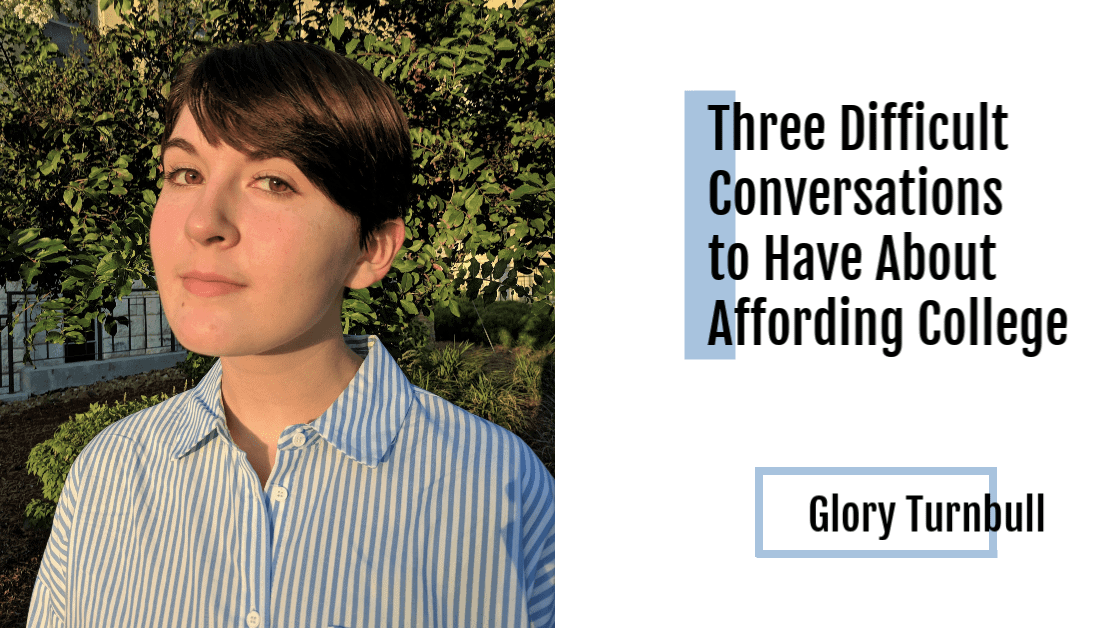Three Difficult Conversations to Have About Affording College
The college application process is an exciting time for high school juniors and seniors. However, for low-income students, it can also be a time of worry in terms of financial needs. The average amount of student loan debt per student in the U.S. continues to climb, positioned at almost $40K in 2023. These following conversations may be difficult to have, but could help clear some misconceptions and prepare you for your financial journey ahead.
1. A Conversation With Yourself
The best thing to do early in your college application process is think hard about your goals and long-term plans. The Bureau of Labor Statistics’ website is a great place to start. Research online to find the answers to the following questions:
- What do you want to do and does that profession require a degree?
- What salary do you expect?
- What major do you want to declare?
- Will you hold a part-time job while in school?
- Are you willing to incur debt?
- Do you want to attend a public or private university?
- Alternatively, what about a community college or trade school?
Once you’ve sorted out some or most of these questions, move on to the next big conversation.
2. A Conversation With Your Parent/Guardian
When you approach your parents about paying for college, it’s best to leave your assumptions at the door and be completely honest about your needs. It’s better to talk finances well before you commit to a school, as sometimes your parent/guardian will make paying for college more manageable. Set aside some time to discuss the following topics:
- College funds and willingness/capability to pay for school
- Limits to financial support
- Other means of support, such as living at home in college, meals, books and transportation
If a parent/guardian can’t provide support, understand that it doesn’t mean they don’t support your goals and dreams, it just means money isn’t something they’re able to provide. FAFSA information, on the other hand, is something for which you should expect help from your parents, and once you complete your FAFSA, you’ll be ready for the final conversation.
3. A Conversation With Your Financial Aid Counselor
Before committing to a school, schedule an appointment with its financial aid office to discuss your aid package, which you should receive in the mail upon acceptance. Don’t be afraid to discuss your needs honestly with your counselor. Be sure to cover the following topics during your meeting:
- The possibility of increases or decreases in your award package
- The availability of internal scholarships and paid projects
- Federal work-study and on-campus jobs
- Potential personal difficulties such as unemployment or major medical procedures
Before leaving, pick up a business card so you can send your counselor a thank-you note later. Once you decide on a school, sending them a thank-you note may make you more memorable and help secure future meetings.
The Takeaway
Applying for college can be stressful for low-income students, but having these conversations, and others, can help you think realistically about your future.
Meet our Ambassadors!
If you are interested in getting involved in our Student Ambassador program, contact Erin Pettus at erin@collegesofdistinction.com.
Learn More About St. Mary’s University
St. Mary’s—aka StMU (S-T-M-U, not Saint Moo)—was the first institution of higher learning in San Antonio and is the oldest Catholic university in the Southwest. It was founded in 1852 by Catholic, Marianist brothers and priests as a grade school for boys. St. Mary’s University made the transition to junior college in 1895 and to four-year college in 1923. It became fully co-educational in 1963, although women earned degrees from St. Mary’s as early as 1929.
Personal attention and challenging academics have made St. Mary’s University, located on 135 acres northwest of downtown San Antonio, a nationally recognized liberal arts institution.




